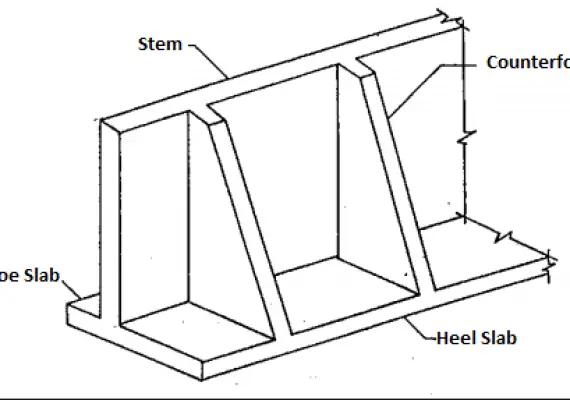What Does Foundation Pads Mean In Construction?
What Does Foundation Pads Mean In Construction?
Foundation pads are a type of shallow foundation used to support localized single-point loads such as structural columns, groups of columns, or framed structures.
They are typically rectangular or circular concrete pads that can be reinforced with steel to reduce the thickness required for the foundation.
Foundation pads can also be combined into longer foundations, such as combined column pads and pad and ground beam foundations.
These types of foundations are used when support is needed close to an existing structure or along a close site boundary.
The purpose of foundation pads is to provide support for structures by transferring their load to layers of soil or rock that have sufficient bearing capacity and suitable settlement characteristics.
How Are Foundation Pads Installed?
Installation of pad foundations involves several steps, including digging a hole, leveling and compacting the bottom, placing the footing pad, placing the post, backfilling, and compacting the soil.
The dimensions of a pad foundation should not be too small so as to cause excessive settlement or bearing capacity failure of the soil.
Pad foundations are designed to effectively spread a concentrated force into a bearing stratum.
The design of pad foundations can be done using any of the following methods: Design Approach 1 (simplified method), Design Approach 2 (semi-empirical method), or Design Approach 3 (limit state method).
How Are Pad Foundation Designed?
Pad foundations are shallow foundations that take and spread point loads to the soil safely. They are typically rectangular, square, or circular slabs that are provided under reinforced concrete columns or column stubs to transmit the column load to the ground.
The dimensions of a pad foundation should not be too small so as to cause excessive settlement or bearing capacity failure of the soil.
The design of pad foundations involves sizing the base slab to satisfy geotechnical requirements and providing adequate thickness and reinforcements to satisfy structural requirements.
Pad foundations fall under category 2 structures which means that they are conventional structures that are founded on non-difficult grounds.
The design of pad foundations can be done using any of the following methods: Design Approach 1 (DA1), Structural Design Example, Plain Concrete Pad Foundation, Reinforced Concrete Pad Foundations, Combined Pad Foundations, Continuous Pad Foundations, and Pad and Ground Beam Foundation.
When designing a pad foundation, it is important to consider factors such as the load acting on the pad, bearing capacity of soil, plan area of the foundation, thickness of the pad, and type of reinforcement used.
For example, when designing a square pad footing for a 250 × 250 mm column carrying a characteristic permanent load Gk of 800 kN and characteristic variable load Qk of 425 kN, one must calculate the bearing capacity of the pad foundation using Design Approach 1 (DA1), check for adequacy in footing thickness, and perform shear stress checks at perimeter defined by U as well as bending checks for reinforcement bars at base with cover 40mm.
What Are The Types Of Pad Foundation?
Pad foundations are a form of spread foundation formed by rectangular, square, or sometimes circular concrete ‘pads’ that support localised single-point loads such as structural columns, groups of columns, and other concentrated loads.
There are several different types of pad foundations, including plain concrete pad foundations that do not use reinforcement, reinforced concrete pad foundations, combined pad foundations, continuous pad foundations, and pad and ground beam foundations.
- Plain concrete pad foundations are an economical solution but only where the applied load will be relatively light.
- Reinforced concrete enables relatively wide but shallow foundations, often designed to be square plan area to make the reinforcing cage easier to construct and place.
- Combined pad foundations are used when the columns are closely placed and the individual pads overlap each other.
- Continuous pad exists when pads and the columns they support are fairly closely spaced. Extending the reinforcing between pads ensures longitudinal stiffness.
- Pad and ground beam comprises smaller isolated pads connected by ground beams to provide additional rigidity for the structure.
How Do You Lay A Foundation Pad?
To lay a foundation pad, you need to prepare the site by determining the dimensions of the slab and dampening the soil.
You then need to lay down a base, which should include compacting each layer of soil with a plate compactor.
Once the base is ready, you can create a secure formwork and tie in rebar for extra strength.
Finally, you can pour and level the concrete using a screed board. After pouring the concrete, it is important to let it cure for 48 hours before popping the form.
What Materials Are Needed For A Foundation Pad?
The materials needed for a foundation pad depend on the type of foundation being used. For an on-grade foundation, blocks measuring 4-inch thick x 8-inch wide x 16 inches long are typically used.
For a frost-proof foundation, a pre-formed concrete cookie pad measuring 6 inches thick and 12-16 inches in diameter is usually used.
Poured concrete slab foundations require a sturdy footing and a vapor-proofed, reinforced-concrete pad sitting on a bed of compacted crushed stone.
Fabric-formed footings made of high-density polyethylene fabric may also be used. Pressure treated 4x4s, 4x6s, or 6x6s are often used to make timber frames for foundations.
Aggregate, sand, fly ash, cement and other materials may also be needed for the construction of the foundation.
